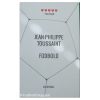The Psysiology of Soccer
29 kr.
1 på lager
The Psysiology of Soccer – with speciel reference to intense intermittent exercise
The present thesis is based on 14 original articles published in international journals (I-XIV, see page 8) and a summarizing review. The thesis deals with the physiological demands of soccer, with a particular focus on the physiological response to repeated intense exercise. In chapter I the specific issues are presented and in chapter II the physiological demands in soccer are discussed based on the results of the studies performed. Chapter III contains a short survey of the experiments performed to study specifically muscle metabolism and muscle fatigue with repeated intense muscle contractions. With reference to the topics covered in chapters II and III, fatigue during a soccer match is discussed in chapter IV, and chapter V deals with applications for physical training in soccer. Measurements have been performed during soccer matches and training, as well as in experiments simulating the activities of a soccer match. The information obtained has been compared to results from studies of the physical capacity of top-class soccer players and from laboratory experiments aimed at investigating metabolism and fatigue in intermittent exercise. Studies with whole-body and single muscle group exercises have been performed, the latter mainly with the application of a knee-extension model. In the studies on isolated muscle groups, biopsies taken from exercising muscles as well as arterial and femoral venous blood samples have allowed for detailed analysis of muscle ionic transportation and metabolism. In addition, the magnetic resonance technique has been used for the continuous determination of changes in muscle metabolites and pH during intermittent exercise. Analysis of activities during soccer matches showed that a top-class soccer player covers an average distance of approximately 11 km during a match. The distance differs highly between players and is partly related to the position in a team. Midfield players run more at low speed than defenders and forwards, whereas no difference appears to exist between groups when comparing the distance covered at high speed. The distance covered at high speed is the same in the beginning as in the end of a match. The total distance covered by a player during a soccer match is only to a limited extent a measure of the physiological demands on the player during the match. In addition to running, a player is engaged in many other energy demanding activities, i.e. tackling, jumping, accelerating and turning. A more precise evaluation of the total energy demand during a soccer match may be achieved by performing physiological measurements in connection with soccer matches
| Vægt | 400 g |
|---|---|
| Årstal | |
| Antal sider | |
| Tilstand | |
| Sprog | |
| Forfatter |
Relaterede varer
Sundhed og træning
Diverse fodboldbøger
Sportsbøger
Sundhed og træning
Diverse fodboldbøger
Sportsbøger
Sundhed og træning
Sundhed og træning












